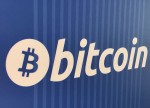
- All Instrument Types
- Indices
- Equities
- ETFs
- Funds
- Commodities
- Currencies
- Crypto
- Bonds
- Certificates
Please try another search

How To Ride 33-Month High Euro With ETFs

The euro has been on a tear lately, being at a 33-month high against the greenback. Heightened speculation over the European Central Bank’s (ECB) possible announcement of the QE wind down as soon as in October was behind this strength (read: ECB to Wind Up QE Soon? ETFs in Focus).
The ECB held interest rates steady and expects rates to "remain at their present levels for an extended period of time.” Though the ECB agreed in its latest meeting on Sep 7 that the latest euro rally could mar the recovery in the inflationary backdrop, he did not talk about any way to deal with the issue. Several market watchers, including the chief European economist at Morgan Stanley (NYSE:MS), believe that “October is probably a sweet spot for [the ECB] to announce tapering.”
This caused the euro to gain further. CurrencyShares Euro ETF (NYSE:FXE) FXE was up about 0.9% on Sep 7. Meanwhile, the dollar plunged fell about 0.7% on the day as hurricanes and Trump’s policy uncertainty have taken center stage. Also, several downbeat economic data points including weak inflation weighed on the dollar.
Notably, the U.S. economy created 156,000 jobs in August, falling shy of economists’ expectation of 180,000 job additions. Not only was August job data less than expected, job totals also were reduced from 231,000 to 210,000 for June and 209,000 to 189,000 for July, as per an article published on CNBC (read: Defensive ETFs to Tackle Weak Job Data, North Korea Tensions).
The ECB is currently buying bonds worth 60 billion euros a month and plans to run the program to December 2017, or beyond, should there be any necessity (read: ECB Trims But Extends QE: ETF Winners & Losers).
Reasons Behind Euro’s Strength
The ECB shot up above $1.20 last month for the first time since the ECB announced the launch of QE two and a half years ago. FXE is up 13.6% this year while Powershares DB US Dollar Index Bullish Fund (UUP) is down 10.2%.
The Eurozone economy grew 0.6% sequentially in the second quarter, in line with the preliminary estimate and following 0.5% growth in the previous period. ECB president Mario Draghi said that the bloc expanded faster than expected in the first half of the year.
The ECB upped its economic growth forecast from 1.9% to 2.2%. However, guidance for Euro zone inflation was cut to 1.2% for next year and 1.5% for 2019, which is nowhere close to the ECB's 2% target.
ETFs to Play Surging Euro
CurrencyShares Euro ETF (FXE)
A strengthening economy and QE taper should boost the euro, making FXE an intriguing pick (read: Why & How to Trade the Soaring Euro with ETFs).
Ultra Euro ETF (LON:ULE)
The fund gives twice (200%) the exposure of the U.S. dollar price of the Euro. The fund was more than 1.7% up on Sep 7, and has gained about 26% this year.
Market Vectors-Double Long Euro ETN URR
This seeks to track the performance of the Double Long Euro Index, less investor fees. The ETN provide investors with cost-effective access to a two-times-leveraged, long exposure to the performance of the euro relative to the U.S. dollar. URR was up about 1.9% on Sep 7 and is up 27.5% this year (see all leveraged currency ETFs).
Want key ETF info delivered straight to your inbox?
Zacks’ free Fund Newsletter will brief you on top news and analysis, as well as top-performing ETFs, each week. Get it free >>
CRYSHS-EURO TR (FXE): ETF Research Reports
PRO-ULT EURO (ULE): ETF Research Reports
MKT-VEC DB L EU (URR): ETF Research Reports
Original post
Zacks Investment Research
Related Articles

Over the weekend I warned about the weakness in the Semiconductor sector (SMH). I also wrote about Granny Retail XRT, and how important it is for that sector to stay alive. Both...

Two weeks ago, the rumor mill ramped up again about the potential restructuring of Intel Corporation (NASDAQ:INTC). The probing balloons centered around Taiwan Semiconductor...

More than a century ago, then-Representative William McKinley pursued an aggressive tariff strategy that sought to protect American industry and reduce reliance on foreign...
Are you sure you want to block %USER_NAME%?
By doing so, you and %USER_NAME% will not be able to see any of each other's Investing.com's posts.
%USER_NAME% was successfully added to your Block List
Since you’ve just unblocked this person, you must wait 48 hours before renewing the block.
I feel that this comment is:
Thank You!
Your report has been sent to our moderators for review





Add a Comment
We encourage you to use comments to engage with other users, share your perspective and ask questions of authors and each other. However, in order to maintain the high level of discourse we’ve all come to value and expect, please keep the following criteria in mind:
Enrich the conversation, don’t trash it.
Stay focused and on track. Only post material that’s relevant to the topic being discussed.
Be respectful. Even negative opinions can be framed positively and diplomatically. Avoid profanity, slander or personal attacks directed at an author or another user. Racism, sexism and other forms of discrimination will not be tolerated.
Perpetrators of spam or abuse will be deleted from the site and prohibited from future registration at Investing.com’s discretion.